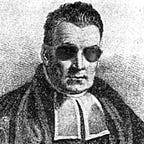I also have this information from the “UpToDate” article on vasectomy:
—
Post-vasectomy pain syndrome — Post-vasectomy pain syndrome is distinct from postprocedure pain; however, there is some controversy regarding its definition and therefore prevalence. Historically, rates for post-vasectomy pain syndrome have been reported as very low (<1 percent). However, surveys have found that the incidence of “troublesome” post-vasectomy pain is reported by approximately 15 percent of men, with pain severe enough to impact quality of life in 2 percent; survey respondents, however, may not have been representative of all post-vasectomy men.
The cause of most post-vasectomy pain syndromes is chronic congestive epididymitis. Testicular fluid and sperm production remain constant following vasectomy. The majority of this fluid accumulates in the epididymis, which then swells. While asymptomatic in most men, some will develop a chronic dull ache in the testes, which is made worse by ejaculation. Other causes or contributors to pain syndromes include the formation of sperm granuloma, or nerve entrapment at the vasectomy site.
First-line therapy for post-vasectomy pain is the administration of nonsteroidal anti-inflammatory medications and warm baths. If unsuccessful, local nerve blocks or steroid injections may be performed by a pain specialist. If the post-vasectomy patient’s discomfort is localized to a tender, palpable granuloma, this may be excised, followed by fulguration of the leaking end of the vas.
Refractory cases may require surgery, including either vasectomy reversal (vasovasostomy) or complete epididymectomy. Vasovasostomy successfully relieves pain in up to 70 to 82 percent of well-selected patients. These patients, however, will almost always require the use of another form of contraception as a result. (See ‘Vasectomy reversal’ below.)
Complete epididymal resection is reserved for the most severe cases. Injury to the testicular blood supply, a known complication of this procedure, causes testicular atrophy. Thirty to 90 percent of patients undergoing epididymectomy for post-vasectomy orchialgia will have residual scrotal pain.
—
There are endnotes in the document, but unfortunately I do not have an UpToDate account and cannot see the end notes in my copy of the document.
Again, the basic takeaway seems consistent:
- 85% of guys do not get chronic pain
- Perhaps up to 15% get chronic pain of some type, meaning pain that persists longer than 3 months. Most of these are probably mild cases, and the men may find the pain, and the duration of pain, to be an acceptable price to pay for the benefits of being sterile.
- 1–2% of guys have a significant, long term symptoms that may or may not respond to treatment. Reversal works for about 75% of these.
- The science is of poor quality, so there is a lot of uncertainty in the numbers. We need large, properly designed prospective studies before we will know how many guys get PVPS.
I’d love to see those studies get done. If we are going to ask men to volunteer to be sterilized, I think we owe them a straight answer, solidly grounded in science, about what are the odds of chronic pain. It would also be a positive change if reversals for pain were covered by health insurance.
